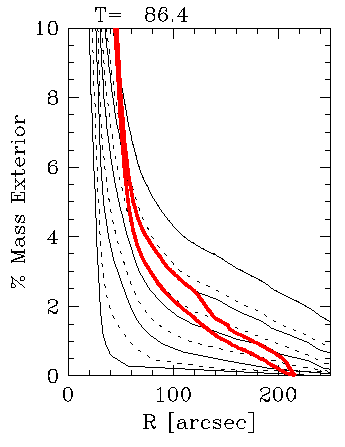
NGC 7252- HI contours overlaid on the optical image in false color. (from Hibbard et al 1994)
A few years ago, Mihos and Holly-Bockelmann looked at constraining the truncation radii of galaxies by examining the tidal tails of the archetypal merger remnant NGC 7252.

The goal is to take a simulation by Hibbard and Mihos that accurately reproduces the tidal tails of NGC 7252, and watch how the tidal tails change if the disk is truncated at different radii.
We can begin to do this by just comparing the "images" of truncated and non-truncated simulations.

|
However, to be more quantitative we compare the mass distribution in the tidal tails of NGC 7252 to the mass distributions of the tails at different truncation radii in our simulations (right). The mass distributions in the observed tails are calculated assuming a mass to light ratio in the tails, based on a simple model evolving the stellar populations in the galaxy. |
 |
From these graphs, it appears that truncation radii of 4-5 scale lengths reproduces the observed tails. However, we have only shown this for one galaxy model. What happens when we try other models?
NFW dark matter halo models